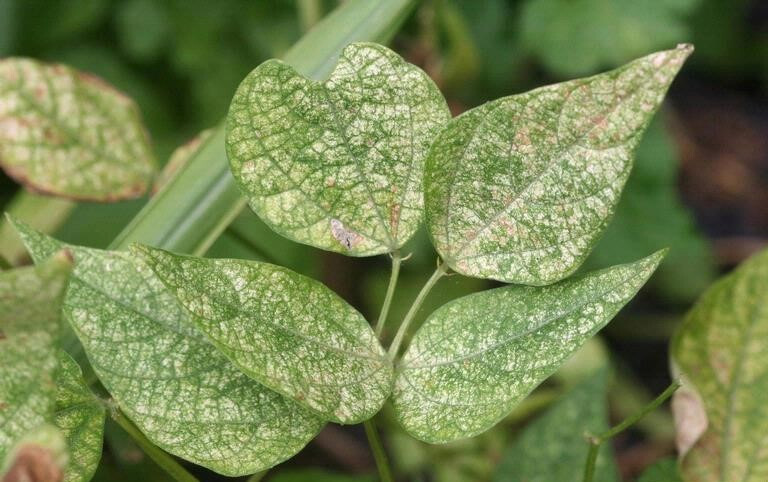Spider Mites

Figure 1. Two-spotted spider mite damage on bean leaves. Photo by W. Cranshaw, CSU, Bugwood.
Host
Several deciduous trees and shrubs.
Damage and Symptoms
Spider mites pierce plant cells and suck the sap out, causing flecking injuries and yellowing. They also cause premature leaf drop. Leaves will start to look wilted, and heavy infestations can cause serious damage to plants.

Figure 2. Two-spotted spider mite damage on bean leaves. Photo by W. Cranshaw, CSU, Bugwood. Larger Image (124KB).
Life Cycle
The mites typically overwinter under debris near host plants. Mites reach adulthood in about 10 days, and females can lay up to 60 eggs in 2 to 3 weeks. They seek shelter later in the summer and cease feeding activity.
Management
Populations of spider mites increase with dryness and warm temperatures. Minimize drought by spritzing plants frequently. If chemical control is necessary, miticides, horticultural oil, neem oil, and insecticidal soap will minimize damage to the natural enemies of spider mites, which are important for spider mite control. Spider mites are resistant to many insecticides, and broad-spectrum insecticides should be avoided due to the killing of beneficial insects and other arthropods.
Further Information
To learn more about the topics discussed on this page, contact the Schutter Diagnostic Lab. If you suspect an infestation on your property, contact your local extension agent, the Schutter Diagnostic Lab at Montana State University, or the Montana Department of Agriculture.
This fact sheet is also available as a printable PDF (248KB).
Disclaimer: These recommendations are provided only as a guide. It is always the pesticide applicator’s responsibility, by law, to read and follow all current label directions for the specific pesticide being used. The authors and Montana State University assume no liability resulting from the use of these recommendations. The Montana State University Extension Service is an ADA/ EO/AA/Veteran’s Preference Employer and Provider of Educational Outreach.
